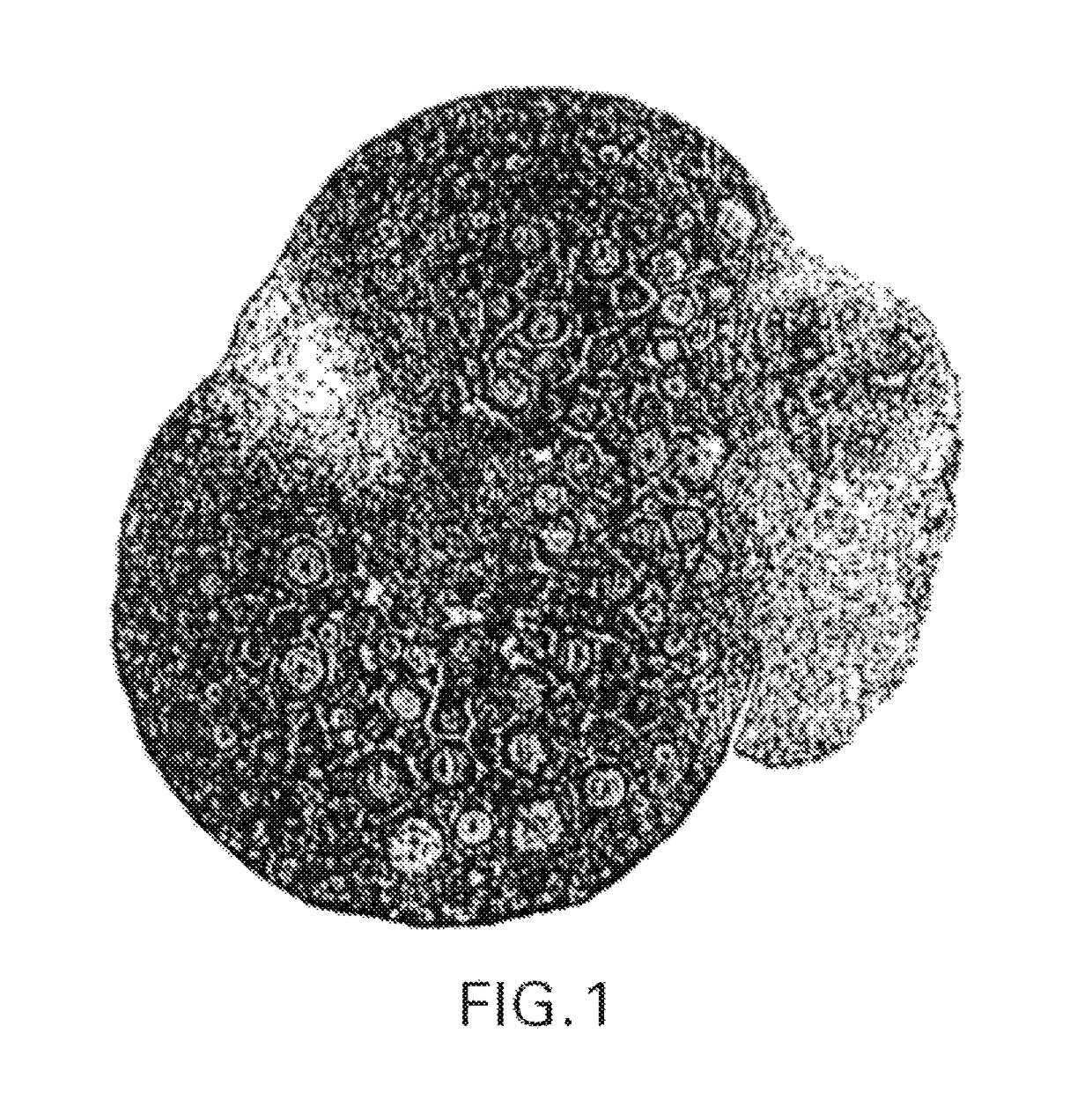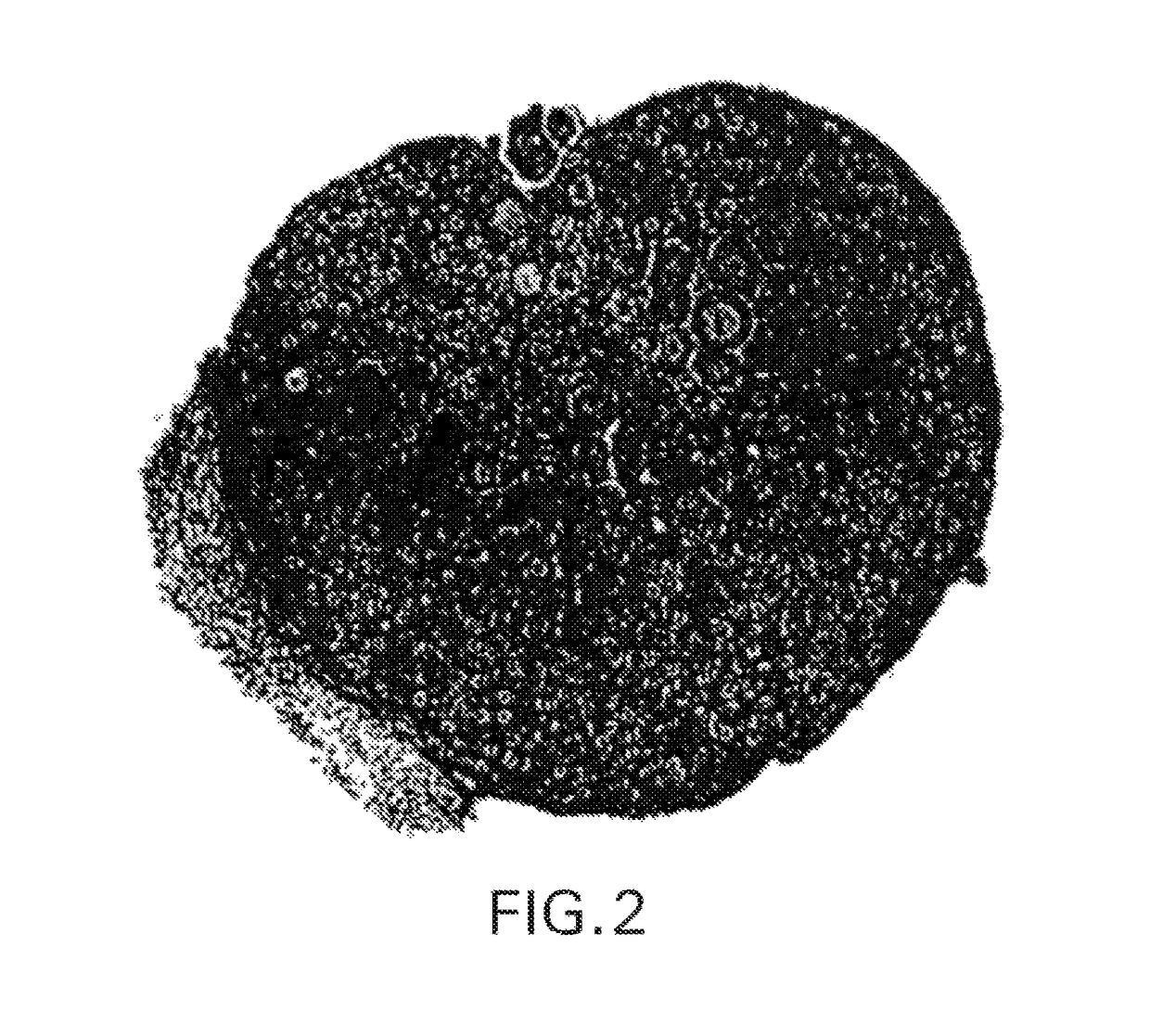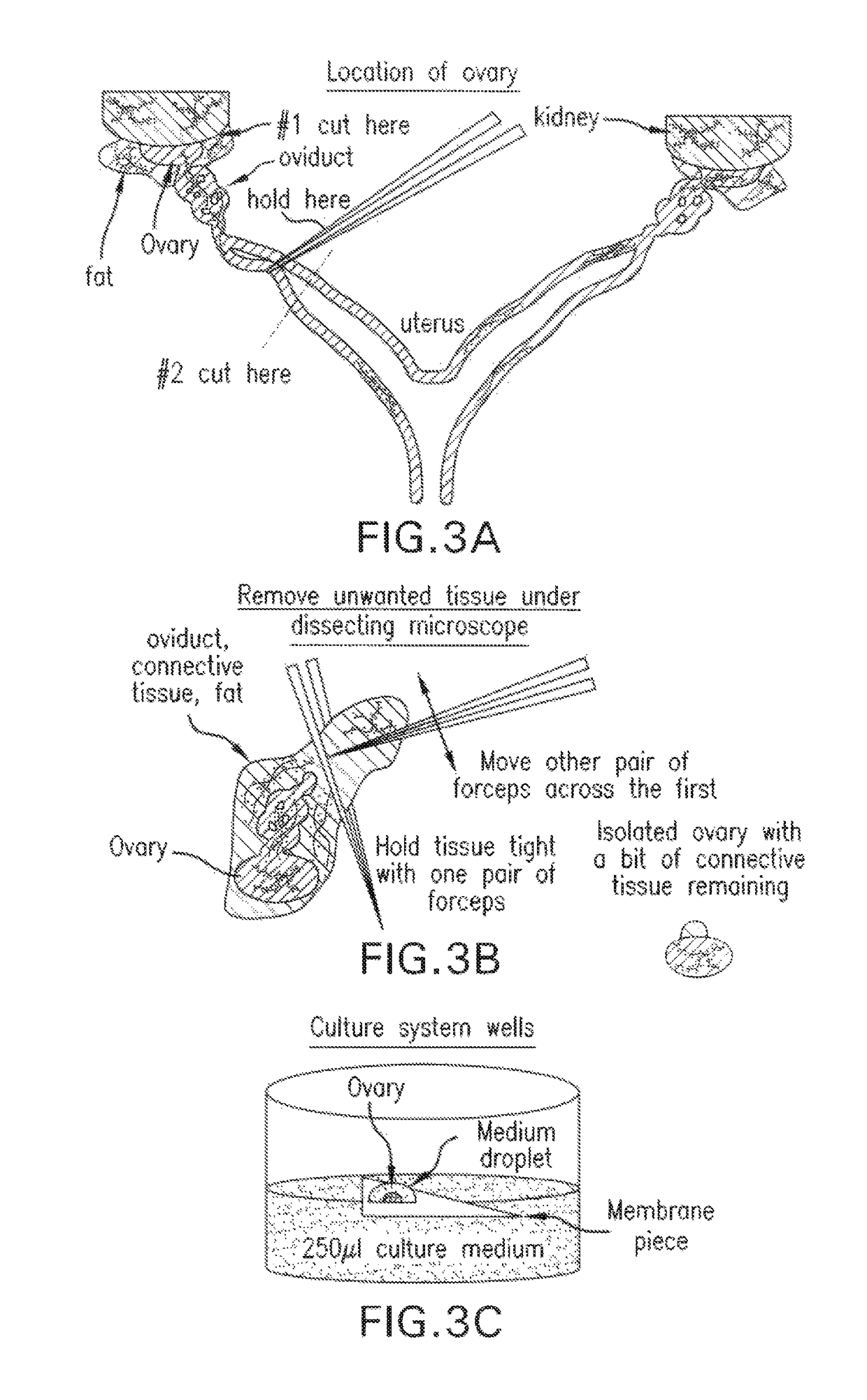Reducing the reproductive capacity of mammals
a technology of reproductive capacity and mammals, applied in the field of compositions and methods for can solve the problems of rodent pests, disease, food supply contamination, etc., and achieve the effects of reducing the reproductive capacity of mammals, reducing the population of mammals, and reducing the number of ovarian follicles
- Summary
- Abstract
- Description
- Claims
- Application Information
AI Technical Summary
Benefits of technology
Problems solved by technology
Method used
Image
Examples
example 3
[0141]FIG. 5 illustrates a cultured ovary treated with 30 μm VCD and 5 nm triptolide using the system and method of comparative example 2. The ovary has no apparent healthy follicles and exhibits extensive atresia and pyknosis. As illustrated, in vitro application of the composition to the ovary caused 100% depletion of all stages of follicles.
example 4
[0142]FIG. 6 illustrates a cultured ovary treated with 30 μm VCD and 10 nm triptolide. As illustrated, in vitro application of the composition to the ovary caused 100% depletion of all stages of follicles.
In Vivo
example 5
[0143]In vivo studies were performed using a 15-day feeding trial of juvenile female Sprague-Dawley rats. The VCD concentration was held constant at 75 mM and the triptolide concentration was varied as noted below. The Experiment design was as follows:
[0144]Control no active ingredients (n=6)
[0145]VCD+triptolide 25 μg / kg body weight (n=7)
[0146]VCD+triptolide 50 μg / kg body weight (n=7)
[0147]VCD+triptolide 100 μg / kg body weight (n=7)
[0148]The experiment was designed to assess: palatability and quantity of bait consumed, health of rats (body weight recorded daily), and ovaries collected for follicular analysis. The rats had access to standard chow along with the control or treatment bait for 15 consecutive days. FIG. 7 illustrates the average daily consumption / body weight for each group and FIG. 8 illustrates body weight trends for each group.
[0149]FIG. 9 illustrates primordial follicle counts, secondary follicle counts, antral follicle counts, and corpus lutea counts for each of the g...
PUM
| Property | Measurement | Unit |
|---|---|---|
| concentrations | aaaaa | aaaaa |
| concentrations | aaaaa | aaaaa |
| concentration | aaaaa | aaaaa |
Abstract
Description
Claims
Application Information
 Login to View More
Login to View More - R&D
- Intellectual Property
- Life Sciences
- Materials
- Tech Scout
- Unparalleled Data Quality
- Higher Quality Content
- 60% Fewer Hallucinations
Browse by: Latest US Patents, China's latest patents, Technical Efficacy Thesaurus, Application Domain, Technology Topic, Popular Technical Reports.
© 2025 PatSnap. All rights reserved.Legal|Privacy policy|Modern Slavery Act Transparency Statement|Sitemap|About US| Contact US: help@patsnap.com



